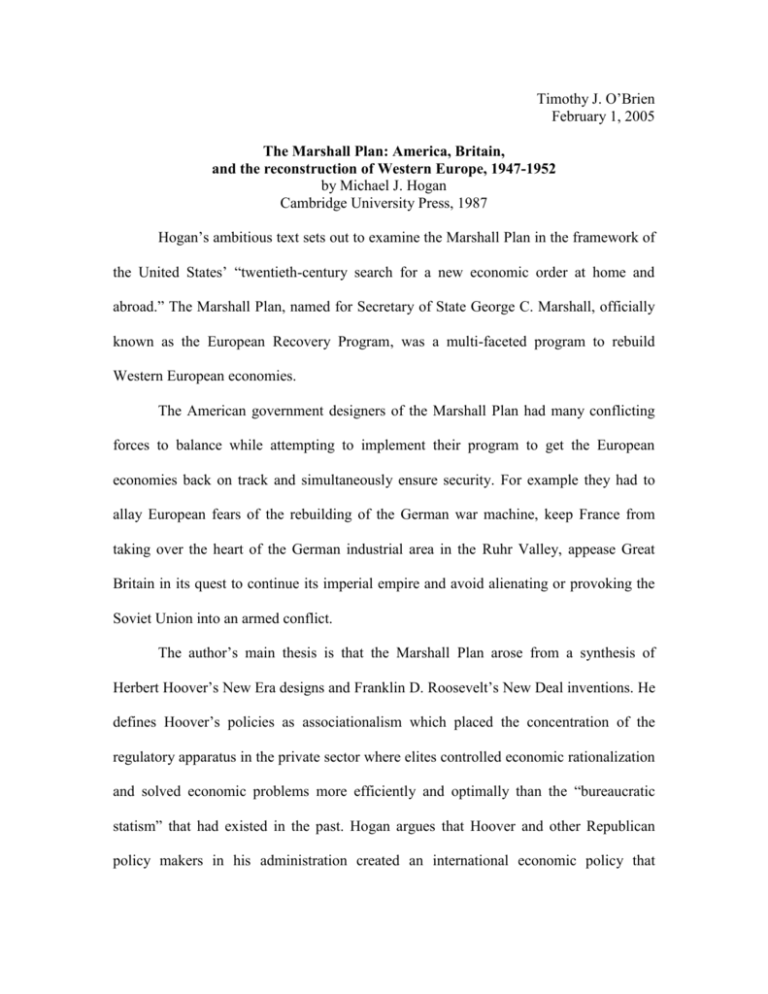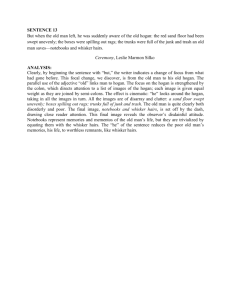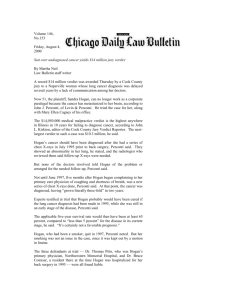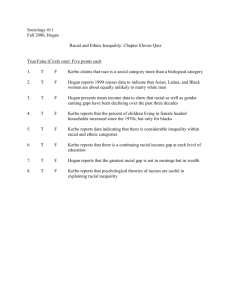The Marshall Plan
advertisement

Timothy J. O’Brien February 1, 2005 The Marshall Plan: America, Britain, and the reconstruction of Western Europe, 1947-1952 by Michael J. Hogan Cambridge University Press, 1987 Hogan’s ambitious text sets out to examine the Marshall Plan in the framework of the United States’ “twentieth-century search for a new economic order at home and abroad.” The Marshall Plan, named for Secretary of State George C. Marshall, officially known as the European Recovery Program, was a multi-faceted program to rebuild Western European economies. The American government designers of the Marshall Plan had many conflicting forces to balance while attempting to implement their program to get the European economies back on track and simultaneously ensure security. For example they had to allay European fears of the rebuilding of the German war machine, keep France from taking over the heart of the German industrial area in the Ruhr Valley, appease Great Britain in its quest to continue its imperial empire and avoid alienating or provoking the Soviet Union into an armed conflict. The author’s main thesis is that the Marshall Plan arose from a synthesis of Herbert Hoover’s New Era designs and Franklin D. Roosevelt’s New Deal inventions. He defines Hoover’s policies as associationalism which placed the concentration of the regulatory apparatus in the private sector where elites controlled economic rationalization and solved economic problems more efficiently and optimally than the “bureaucratic statism” that had existed in the past. Hogan argues that Hoover and other Republican policy makers in his administration created an international economic policy that attempted to blend public and private power in a new way that foretold future American economic policies. This policy attempted to solve international economic problems by stressing economic solutions over political solutions. Ultimately Hogan argues that Hoover’s associationalism failed both at home and abroad in the post World War I years. Hogan credits Roosevelt’s New Deal policies for causing a “gradual convergence of public policy and progressive opinion in the business community that led to a major political realignment.” This New Deal coalition set the political agenda for the next forty years. The political realignment enabled the New Dealers to spur economic growth internationally. Hogan maintains that this economic success was partially possible because of the contribution of Hoover’s attempted corporative design. Analyzing the Marshall Plan through this framework instead of a Cold War perspective allows the reader to see the Plan as a “logical extension of domestic and foreign policy developments going back to the ...first ...effort to reconstruct war-torn Europe,” claims Hogan. The main objectives of the Marshall Plan according to Hogan was to form supranational bodies to integrate Western European countries economically and politically, remove trade barriers, tariffs and regulations between the countries, form a European payments union and make currencies convertible. Fulfilling these objectives would allow the economies to revitalize, limit or reduce dependency on aid from the U.S. and contain communism. Hogan argues that by design the plan would expand American corporation’s access to the Western European markets and remake the participant countries to resemble the American economy. Organized in nine chapters, much of the book details the diplomatic wrangling that took place to push the Marshall Plan’s corporate agenda on the unwilling participants. The beneficiary countries had conflicting objectives and sought to protect their sovereignty, maintain the Commonwealth and prop up the sterling. France and Britain also sought to restore themselves to their prewar military and economic role in the world. The French and British governments were also concerned with reparations and prohibitions and restrictions on German industry. Britain’s desire to be viewed as a power separately from the other Western European powers made negotiations and implementation of America’s policies difficult. The U.K. arguments against economic unification foreshadowed their position in the current European Union. The U.K. feared that the unity of the Western European countries would come at the expense of its economy and sovereignty. The imperial attitude and desire of the British to regain its lost position as a world leader complicated the process to assert American policies and corporate hegemony in the region. Although the volume is meticulously researched, it often times assumes that the reader has a general knowledge of the political history and economic terms. Professor Hogan used an astonishing amount of primary sources in the United States and England as well as a wide variety of secondary material to construct this lengthy study. Weighing in at four-hundred and forty-five pages, it doesn’t skimp on detail. Unfortunately this is often to the detriment of the reader. More analysis and less minute detail would have improved the book. Some of the writing lacks clarity which makes it hard to discern the author’s points. One minor but very annoying shortcoming is the lack of an abbreviation list. There is hardly a page that doesn’t contain three or more acronyms. Trying to keep up with all the meanings of the acronyms is an unnecessary burden on the reader. A look at a sample of the reviews reveals that it was generally well received but not without some reservations. David Wightman from the University of Birmingham, writing in the Economic History Review, criticizes Hogan for his vague characterizations and mere descriptions of diplomatic proposals. He points out that Hogan’s strength is in diplomatic history. Wightman’s other main criticism is that the tome contains no serious economic analysis. He states that examining the Marshall Plan without the appraisal of the dollar problem is like playing poker without stakes. Robert M. Collins of the University of Missouri, writing in the Journal of Economic History, praised the book for being intellectually challenging and rewarding but noted that some readers will be troubled that the Cold War isn’t a central part of the analysis. In a piece for the English Historical Review, John W. Young of the London School of Economics opines that the book’s major weakness is its lack of European sources. Young praised the volume for being superior to any American work on the topic. Emory University’s Fraser Harbutt rates the book as the finest to appear on the subject so far and praises it for its skillful analysis. David Reynolds of Christ College, Cambridge, concurs that Hogan has written an important and provocative interpretation of the American recovery program but faults it for not enough analysis on how the recovery policies were implemented.







